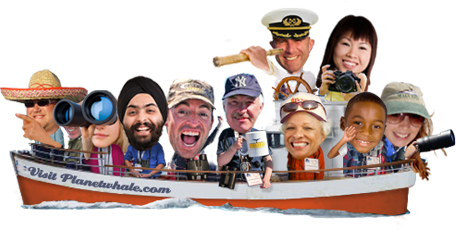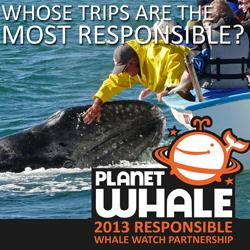
Moidjio C.R.C.A.D. | Whale & Dolphin Watching
Moidjio CRCAD is a non profit organisation who welcome people to help for conservation of marine mammals and turltes. Moheli and the marine park is one of the best destination in the world with more than 9 species of whales, 9 species of dolphins, Dugong and marine turtles. Make your whales watching experience a donation to conservation, your help is needed and you'll have the trip of your life. The project (5 years): This project aims to answer to the I.W.C scientific committee call for research in the area. We would like to focus the research on population identification and abundance estimation as well as breeding stock structure and behaviour assessment. It is also planned to undertake a stock assessment of other marine mammals encountered during assessment, such as Dugong, dolphin species and other whales. All our results will be used for law reinforcement within the marine park of Moheli in order to protect and conserve effectively marine mammals. We will also monitor Dugong habitat for best management practice. Humpback whale calve, 2009 (Katy Lynn)
The project is the first ever complete study in the area, bringing new concepts and expectations to local conservation effort, aiming to make new discovery in the area, testing a combination of survey effort techniques for population estimation and trends, understanding breeding behaviour and gender disparity, working on and adapting statistical models and reinforcing law within the marine reserves. The 2008 I.W.C. Workshop urged scientist community to work on different humpback whales Breeding Stock (BS) with priority given, among others, to BSC including Comoros islands. Humpback whale research is indeed very poor in the Comoros but nevertheless promising. This reflects the lack of economical development and scientists’ availability, especially for the three independent islands. This whale population is of great interest for research because as well as being understudied, it is fairly undisturbed by whale watching, vessel traffic and fishery gears around Comoros, giving scope for behavioural observations. The monitoring of Dugong habitat is paramount in any conservation effort and easy to put in place it is also possible to either spot them or traces of their feeding behaviour. Dugongs are nearly extinct in Comoros and recording sign of recovery would be of great scientific interest.
Flapping tail, 2009 by Benjamin Wambergue.
What will you do ?
marine mammals spotting, Photo-Id, data collection (behaviour), data entry, sea- grass meadow monitoring (dugong grazing site), site maintenance , equipment maintenance, people awareness. Bottlenose dolphins bow riding by Benjamin Wambergue
 Salim and Privee, waiting to go, 2009 by Katie Tiernan
What is photo identification ?

For humpback whales, we are looking at getting the fluke which is the best and easiest way to recognise individuals and after the dorsal fins 2 sides, pectorals if we can and finally any really obvious marking such as scares or discolouration, dimorphism.
Bottle nose Dolphins, photo-identification by Benjamin Wambergue.
Basically we are looking to get as much clues as possible, to make the best identification. Once done, the pictures are loaded into computers and we try to match them to previous encounters. Each Whale get a name, an ID number and we are recording date, time, position, behaviour, group size and presence of calves.
For each encounter, a GPS point is recorded and every 15 minutes, in order to localise preferential habitat.
An identification card is also dressed for each individual and matching pictures are grouped together to understand how long whales are staying for and if they come back years after years and for long studies how long they live, how many calves they had etc...
 Identification card for each whale by Moidjio CRCAD Identification card for each whale by Moidjio CRCADAcoustic Surveys
We are looking at several aspect of whales and dolphins behaviour. We are focusing on whale watching impact on direct behaviour of cetaceans population in order to advise in tourism best practice. You will be in charge of taking notes in order to record whales and dolphins' surfacing, change of direction, distance boat-pod, distance between individuals.
MonthsJune • July • August • September • October • November DurationMulti-day Vessel typesSmall boat (0-50 passengers) Times and prices
Cost/accommodation
About our skippers and naturalist guides
come and visite our website for full listing @ https://sites.google.com/site/aberdeenphotographie/team-presentation
MRes Benjamin Wambergue
Director of scientific expeditions for Moidjio C.R.C.A.D.
Interest: Ecology and behavioural study from insects to whales, Environmental education, tourist and local people awareness.
Graduation: Master's of Research in Ecology and environmental sustainability, BSc in environmental science, D.U.T in environmental genius.
Trained in: Cetacean, turtle, research, MMO and PSO (JNCC approved) Photo-ID, boat handling, diving, free diving.
Role in the Charity: expedition leader, data collection and analysis, charity management.
FacilitiesDeck with 360?vision • Naturalist guide(s) as well as skipper • On board hydrophone • Onboard research • Public participation in research • Reading material available • Support conservation • Swim / snorkel included • Use a code of conduct We frequentlyListen to whale song • Listen to whales and dolphins • See a whale's tail • See leaping dolphins • See leaping whales • Showered by whale blows • Swim with them in the wild • Watch whales and dolphins Baleen WhalesHumpback Whale Toothed WhalesFalse Killer Whale • Long-finned Pilot Whale • Short-finned Pilot Whale • Sperm Whale Beaked WhalesBlainville's Beaked Whale • Cuvier's Beaked Whale Ocean DolphinsBottlenose Dolphin • Fraser's Dolphin • Indo-Pacific Bottlenose Dolphin • Indo-Pacific Humpback Dolphin • Pantropical Spotted Dolphin • Risso's Dolphin • Spinner Dolphin Other wildlife and points of interestWe will ride on on the the most beautiful scenery right on the middle of the marine park of Moheli. Comoros is like Seychelles in better... We also organise snorkelling on preserved coral reefs and we organise turtles nights on wild islands with camping on the white sand. AddressMoidjio Beach
Town / CityNioumachoua
State / CountyZip / PostcodeCountryComoros
WebsiteTel00447896463419

|
Click to browse all boats
|












